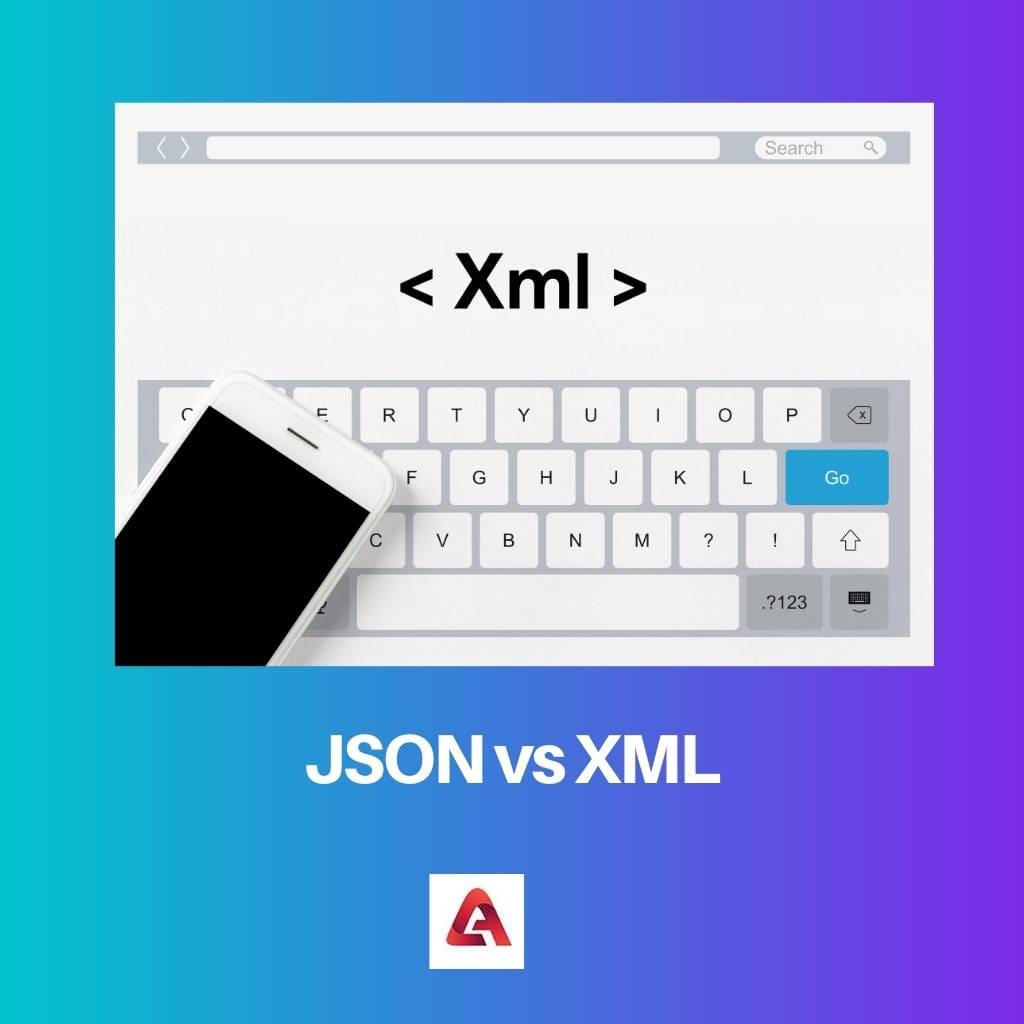JSON (JavaScript Object Notation) is a software program used to create web content by transferring data, while XML (Extensible Markup Language) is encryption software.
Both are used to encrypt various forms of language to communicate between the browser and the server.
JSON is based on JavaScript, while XML is more of an HTML-like application. They both work by coding and decoding the encryption.
They play a crucial role in the complex field of web creation and programming languages. Both are widely used for language encryption all over the world.
Key Takeaways
- JSON is a lightweight data-interchange format that is easy to read and write, whereas XML is a markup language primarily used for documents and web services.
- JSON has a simpler syntax and is more compact than XML, making it faster and easier to parse and generate.
- JSON is primarily used for web and mobile applications, while XML is used in various applications such as data exchange, document management, and configuration files.
JSON vs XML
JSON is an open standard file format used for data transfer, and XML is a markup language used to keep the data structurally and organised. JSON has a file format of a data interchange, and XML has a markup language file format. JSON is based on JavaScript, and XML is based on Standard Generalized Markup Language.

JSON stands for JavaScript Object Notation and is used in transmitting data on the internet in a parseable manner. It is in a highly data-oriented format. It has an open standard file format and a data interchange format.
JSON uses human-readable text to store and transmit data. It is independent of language, and nowadays, many programming languages include code to generate and parse JSON format data.
XML stands for Extensible Markup Language and structurally keeps the data. XML is more like a document-oriented format.
XML is a derivative of SGML(Standard Generalized Markup Language), and it defines a set of rules followed by its usage in encoding documents in a machine-readable and human-readable format.
It provides a base language for other communication protocols, such as XMPP(Extensible Messaging and Presence Protocol).
Comparison Table
| Parameters of Comparison | JSON | XML |
|---|---|---|
| Full form | JavaScript Object Notation | Extensible Markup Language |
| Based on | JavaScript | SGML derivative |
| Started in | 2002 | 1996 |
| Usage | Used for representation of objects | Markup language and uses structures for the representation of data items. |
| Supports | Supports array and UTF-8 encoding. It doesn’t support namespaces or comments. | Supports namespaces, comments, and various encodings. Doesn’t support arrays. |
| Security | Less secured | More secured |
| Tags | Does not uses an end tag. | Uses start and end tags. |
What is JSON?
JSON stands for JavaScript Object Notation. It is used for communicating between browser and server and has an open standard file format.
The data format of JSON is independent of languages and hence easy to read by humans. JSON has the file extension of .json and is used for storing information, and is organized in an easy-to-access manner.
The data collected is easily and logically accessible and readable by humans.
JSON is a lightweight data interchange format. It is language-independent and is based on the programming language called JavaScript. JSON is easy to generate and easier to understand.
Example,
{ “Geeks” : [
{“firstName”: “Sakshi”, “lastName”:” Sharma”}
]}
JSON offers a very high-level façade which simplifies the commonly used use cases. JSON is fast as it uses very little space and is used in cases of large graphic files.
The library of JSON is an open-source library, and anyone can use it free of cost. Also, the JSON library is independent of other libraries making its file easily readable.

What is XML?
XML stands for Extensive Markup Language and is case-sensitive. XML is not used for displaying data but rather to carry or transfer the data.
It is a markup language that defines a specific set of rules for the documents to be encoded. The language is in a format understandable by both machines and humans.
It focuses its design on generality, simplicity, and usability on the internet. The file extension for XML files is .xml, and the basic unit is known as an element.
It is presented in a textual data format. The design focuses on the documents and is also used for arbitrary data structure representation, as in cases of web series.
Example,
<Geeks>
<Geek>
<firstName> Sakshi</firstName> <lastName>Sharma</lastName>
</Geek>
</Geeks>
XML does not have predefined tags; one must use customized tags. XML is used to carry data files and does not allow data displaying. It has a markup language that is easily understandable by humans.
XML is also an extensive markup language, just like HTML, and its file format is easy to read and write.

Main Differences Between JSON and XML
- JSON doesn’t use end tags, while XML uses both start and end tags.
- JSON is comparatively shorter than XML.
- JSON is quicker to read and write as it can be parsed more easily than XML.
- While any JavaScript language can parse JSON, XML is parsed using the XML parser.
- JSON types include strings, arrays, numbers, and Boolean, while XML data must be a string.
- JSON is supported by most browsers and is easy to read, while cross-browser XML parsing is tricky enough.
- XML has data display capability owing to being a markup language, while JSON lacks this feature.
- While JSON supports only text and number data types, XML can support text, charts, numbers, graphs, images, etc.

- https://www.cs.montana.edu/izurieta/pubs/caine2009.pdf
- https://ieeexplore.ieee.org/abstract/document/6394535
- http://archive.ceciis.foi.hr/app/public/conferences/1/papers2014/696.pdf